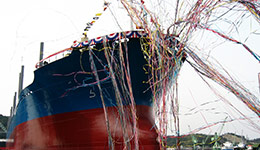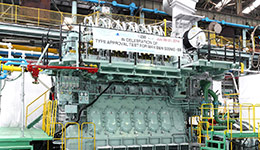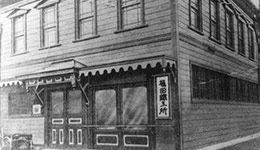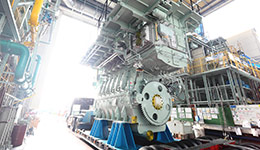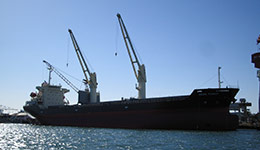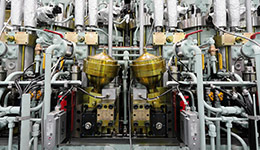The Seto Inland Sea Cluster
The coast of the Seto Inland Sea has prospered as a strategic location associated with maritime traffic since long, long ago, and today is known as an integral part of the maritime industry. The development of the modern maritime industry in Japan began during the latter half of the Meiji era (late 1800s). Modern shipbuilding companies were established in places such as Innoshima (Hiroshima Prefecture) and Imabari (Ehime Prefecture), while neighboring industries were also being fostered. However, Japan's maritime industry up until 1970 was centered on major enterprises in Kantō, Tōkai, and Kansai. This changed completely during the shipbuilding recession of the 1980s. Major companies shifted away from shipbuilding, and many of the small and medium-sized businesses in Kansai, in order to enhance productivity, moved their manufacturing facilities to Northern Kyushu and around the Seto Inland Sea. Meanwhile, shipbuilding companies already in the Seto Inland Sea area stayed and continued operations. As a result, a globally-oriented maritime cluster formed there. Now, global competition between maritime businesses is becoming increasingly fierce. In terms of coming out ahead, a big advantage is going to those who can put themselves in an environment where they can optimize integration and synergy with related industries.
The DNA of Ingenuity
In 1910, Makita Corporation was founded under the proprietorship of Hisashi Makita. This was the dawn of Japan's maritime industry, and during a time where Japanese shipbuilding still involved a great deal of trial and error, Hisashi Makita completed a marine engine single-handedly. Developed in 1927, his solid injection four-stroke diesel engine with 15 horsepower even won an award at an exposition in Nagasaki. Then, in 1941 the company became incorporated under the name "Makita Tekkosho" (Makita Ironworks). The independent development and production of the company's own marine four-stroke diesel engine was underway. Now, with holding a top market share in the world as a sub-licensee of MDT as its launching point, Makita Corporation is resolute in furthering the Japanese maritime industry while evolving and improving itself as a company. Our employees are always discussing engineering know-how and creative strategies, which is why we say that “ingenuity” is a part of the company’s DNA.
Responding To Change
For the first half-century of the company’s existence, the demand for Makita-made engines was supported by motor-powered sailing vessels (wooden cargo ships) transporting miscellaneous goods and coal to and from the Seto Inland Sea and fishing vessels. Our company also improved the performance of our engines by moving from hot-bulb engines to four-stroke diesel engines, using purely our own ingenuity. Around that time, Makita engines gained a nationwide reputation for their robustness and impressive horsepower. For a time, many of our engines were used on salmon and trout fishing vessels in Hokkaido, and we were also popular with operations based in Sapporo.

However, in the 1970s the domestic fishing industry went into a slump and demand for engines shifted to cargo ships with the scale of the ships also becoming larger and larger. The four-stroke engines could only muster up to about 6000 horsepower, meaning they no longer met the needs of the ships. Circumstances looked as though there was going to be another shipbuilding recession. This was the first crisis since the company’s founding. That was when our company made the decision to move to manufacturing two-stroke diesel engines.
Becoming a two-stroke engine manufacturer meant moving from being a traditional manufacturer of original engines to a licensed manufacturer. This was because two-stroke diesel engines were already the central battlefield in the world market, and an oligopoly was already held by global engineering enterprises. For this reason, our company started by signing a technical assistance agreement with Mitsui Engineering & Shipbuilding. Having learned the manufacturing know-how for the two-cycle diesel engine working with Mitsui Engineering & Shipbuilding, we sought and became a sub-licensee of MDT, the world leader in marine engines.
At the time it was the only way for Makita Corporation to survive, and those decisions have brought us to where we are now. By no means has it been smooth sailing since that time, but through inventiveness and hard work we have been able to overcome many obstacles. Makita Corporation's history of over a hundred years has been one of adjusting in response to change.





